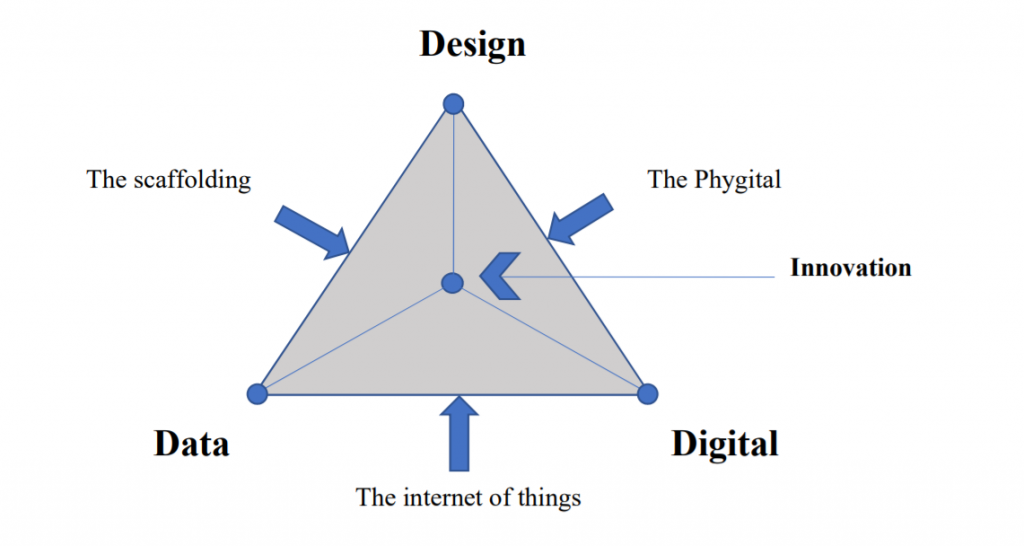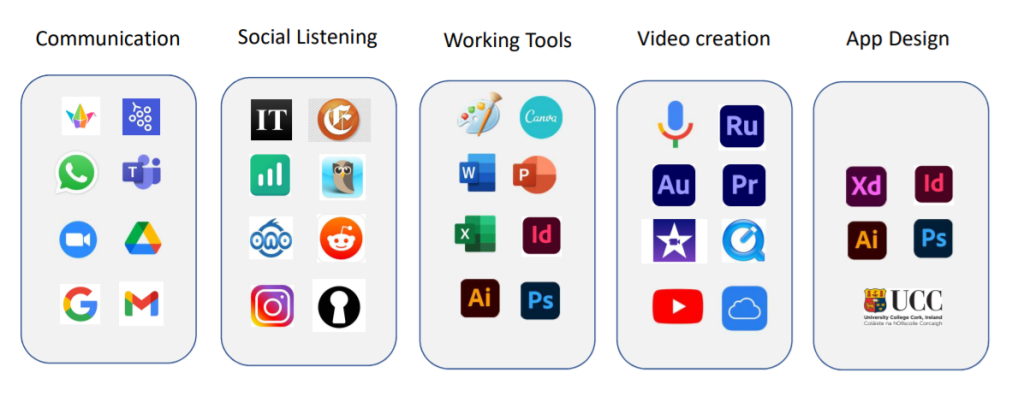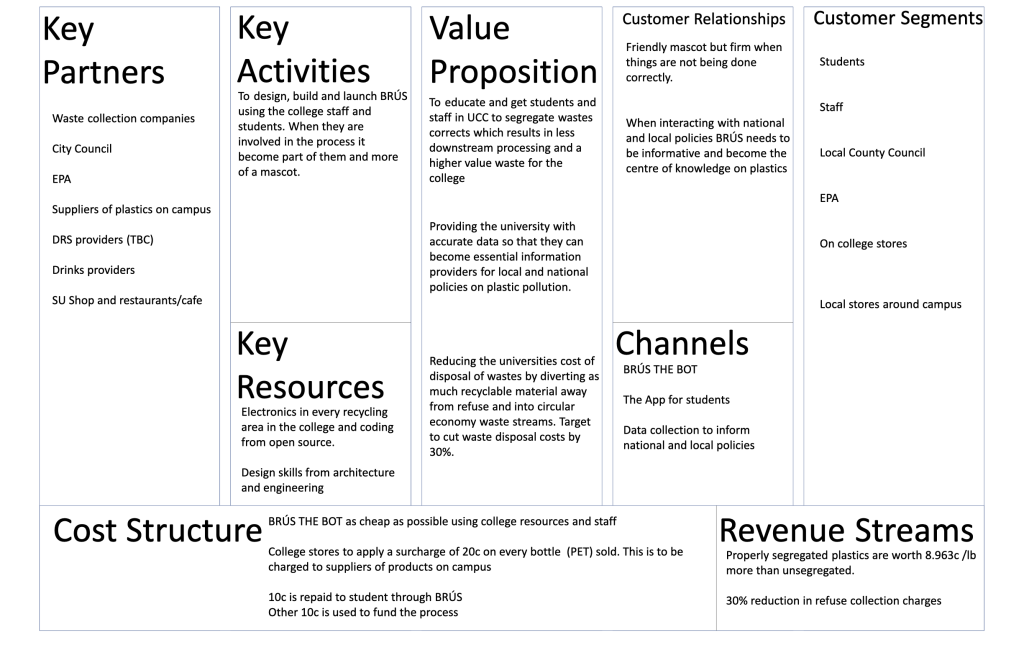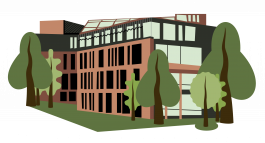The D3 Literacies
John Collier and Rosemarie Foley
The D3 literacy of Design, Digital and Data can best be represented by the below model (Figure 16). The Design Process followed by the Team was the Hasso Plattner framework of Design Thinking. Data is the “Scaffolding” for Design. Digital made Physical through Design Development as “Phygital” and the “Internet of things” linking The Digital and Data. The Desirable, Feasible and Viable connectors from these three pillars create the “System for innovation”.

Figure 16: Illustrative representation of the D3 literacy model.
The Digital Data collected via the BRÚS App will measure an individual’s statistics as to how well their personal Carbon Footprint is performing and provide analytics for the University. This could then be shared nationally and internationally as a Global Network initiative. Leveraging the existing trusted UCC Website and The Boole Library data bank where the BRÚS Robot design Blueprint/Specifications would be shared as more reliable and professional open source Data. In addition, the credit refund from the Deposit Return System (DRS) will be linked to the UN SDG charities to benefit the Circular Economy.
The Physical Robot was envisaged to be made by students using recycled materials from the collected PETE or Recycled 3D printer waste in the Library to extrude new filament at the Maker Space. The Housing of BRÚS would be considered in a feasibility study before Planning Permission for Housing. As part of that Planning Permission process, a revised description of Waste as By-Product will then elevate the conversation to be critical about the reuse of resources and protecting the planet. This professional review of The nature of hard landscaping and the position of Bi-Products in the collective culture could lead a national movement in waste management in Ireland toward the Zero Percent Plastics Goal.
From an Academic Perspective, D3 is a lot more than what tools we use (Figure 17). Another important point to note is that D3 is also about the sources for the Data (be that Digital or real-world resources). And validating that the collected Data is correct and not leading to misinformation i.e. referencing peer-reviewed information or information from reputable resources. 
Figure 17: Representation of digital platforms used for various aspects of the Design Thinking study
For example; In a study comparing Google and Microsoft it was found that “Google’s focus is more on Internet services and Microsoft focuses more on developing computer software and personal computers.” (supriya_saxena, n.d.) Whereas other studies show the link between online activity and mental health issues. (Junghyun Kim et al., n.d.) We believe the D3 systematic innovation model outlines how to balance the use of all three pillars as we did for BRÚS. (Arup Kumar Ghosh, n.d.)
BRÚS or Bottle, Recovery, University, System was the brain-child of Foresight; By planning for change and development BRÚS is sustainable and viable long term.
The team proposed to connect aspects of BRÚS to the Connected Curriculum as an instrument to break down silos within the University proposing that BRÚS could be on loan to a School for a month to develop a connected curriculum. BRÚS could collect other Data, for example, the accessible routes taken by electric wheelchair users. A suite of BRÚS autonomous robots could be developed going forward for bio-waste disposal or remote access areas on water or in the air. As AI and VR are emerging technologies, BRÚS would also have a role to play in testing Human Centered Robot responsiveness and anthropomorphism.
Conclusion
The Strategyzer Business Model Canvas was used to investigate strategically how BRÚS would be implemented on campus. This is shown in Figure 18 Business Model Canvas for the implementation of BRÚS.
Business Model Canvas for the implementation of BRÚS

Figure 18 Business Model Canvas for the implementation of BRÚS.
Overall, BRÚS as a concept was well perceived by the persona group, would serve well as a mascot for the campus and educate the students on the importance of waste segregation from both environmental and financial perspectives. The business model canvas (Figure 18) shows that a properly segregated dry-recyclable circular waste stream is of added value and the university can significantly reduce its waste collection fees as less is going to landfills and earn a higher income than their current plastics valorisation.
As a team of many different people, we have all learnt a significant amount in the areas of D3 literacy and have survived through the uncomfortable aspects of our team interactions to finish with a concept that has the potential to be made a reality.
But after completing a full cycle of the Hasso Plattner model of design thinking, all five team members of Team 1 can confidently call themselves “Design Thinkers”. This we believe is because we released our personal preferences and picked a topic from a tweed hat.
